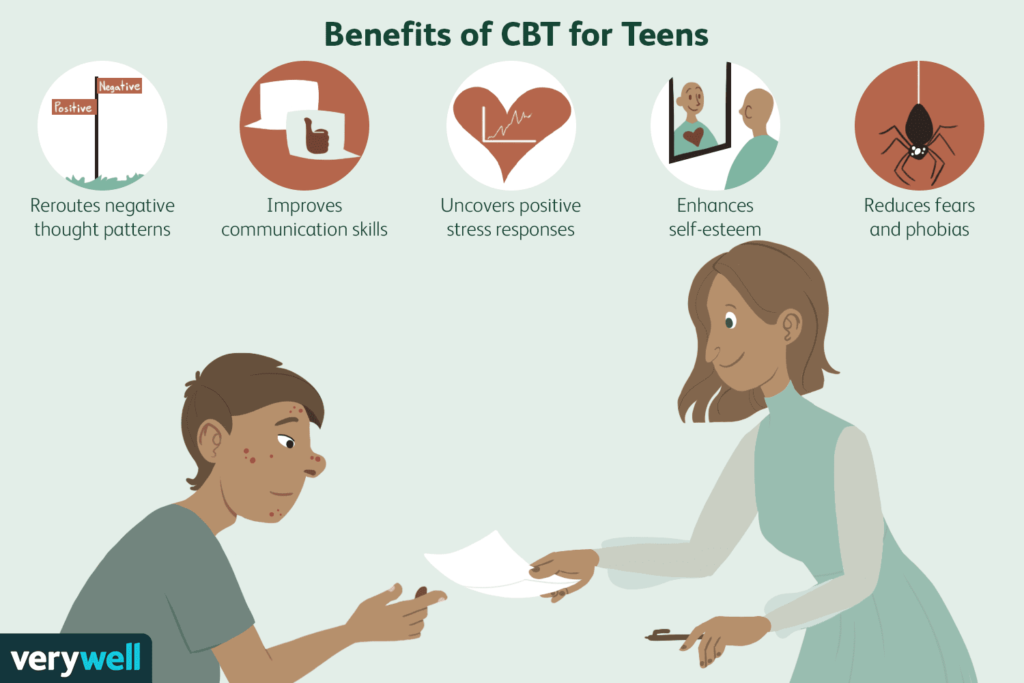What Principle Underlies Cognitive-Behavioral Therapy?

Demystifying the Maze: Unveiling the Core Principles of Cognitive-Behavioral Therapy (CBT)
Feeling overwhelmed by negative thoughts? Struggling to manage emotions? Cognitive-behavioral therapy (CBT) has emerged as a powerful tool for individuals seeking to understand and modify their thought patterns and behaviors to achieve emotional well-being. This comprehensive guide delves into the core principles of CBT, exploring its theoretical foundation, therapeutic techniques, and its effectiveness in addressing various mental health challenges.
Unveiling the Core: The Pillars of CBT
CBT rests upon a fundamental principle: our thoughts, emotions, and behaviors are interconnected. Negative or distorted thinking patterns can fuel negative emotions and contribute to unhealthy behaviors. Conversely, modifying these thought patterns can lead to positive changes in emotions and behaviors. This core principle forms the foundation of CBT interventions.
Here’s a breakdown of the key pillars underpinning CBT:
- The Cognitive Model: CBT posits that our thoughts, interpretations, and beliefs about situations significantly impact how we feel and behave. These thoughts, however, aren’t always factual or objective.
- Cognitive Distortions: CBT identifies common patterns of distorted thinking that can contribute to emotional distress. Examples include catastrophizing, overgeneralization, and emotional reasoning.
- The Behavioral Model: Our behaviors can also influence our thoughts and emotions. CBT acknowledges that certain behaviors might reinforce negative thinking patterns.
Understanding this interconnectedness between thoughts, emotions, and behaviors empowers individuals to identify and challenge unhelpful thought patterns and develop healthier coping mechanisms.
From Theory to Practice: Therapeutic Techniques in CBT
CBT therapists employ a variety of techniques to help individuals identify and modify unhelpful thought patterns and behaviors. Here are some common approaches:
- Cognitive Restructuring: This technique involves identifying and challenging negative or distorted thinking patterns. Therapists help individuals develop more realistic and balanced perspectives.
- Behavioral Activation: This technique focuses on identifying and increasing activities that promote positive emotions and a sense of accomplishment.
- Exposure Therapy: This technique gradually exposes individuals to situations or objects that trigger anxiety or fear, allowing them to develop coping skills and reduce avoidance behaviors.
- Relaxation Techniques: CBT therapists often incorporate relaxation techniques like deep breathing or mindfulness meditation to help individuals manage stress and anxiety.
- Socratic Questioning: Skilled therapists use Socratic questioning to guide individuals towards identifying underlying assumptions and biases in their thinking patterns.
CBT is a collaborative process. Therapists work closely with clients to develop individualized treatment plans tailored to their specific needs and challenges.
Enhancing SEO with Visuals: Creating a flowchart illustrating the CBT process, highlighting the interconnectedness of thoughts, emotions, and behaviors, and showcasing potential therapeutic techniques, can significantly enhance user engagement and provide a clear visual reference.
A Spectrum of Applications: The Effectiveness of CBT for Various Mental Health Concerns
CBT has proven to be an effective treatment for a wide range of mental health conditions, including:
- Anxiety disorders: CBT can significantly reduce symptoms of generalized anxiety disorder, social anxiety disorder, and panic disorder.
- Depression: CBT can help individuals identify and challenge negative thought patterns that contribute to depression, leading to improved mood and motivation.
- Obsessive-compulsive disorder (OCD): Exposure therapy and cognitive restructuring techniques used in CBT can help individuals manage intrusive thoughts and compulsive behaviors associated with OCD.
- Eating disorders: CBT can help individuals with eating disorders develop healthier relationships with food and their bodies.
- Post-traumatic stress disorder (PTSD): CBT techniques like exposure therapy can help individuals process traumatic experiences and reduce PTSD symptoms.
CBT is not a one-size-fits-all approach. However, its versatility and evidence-based practices make it a valuable tool for individuals seeking to improve their mental well-being.
Frequently Asked Questions (FAQ): Navigating Your CBT Journey
Now that you’re equipped with knowledge about the core principles and therapeutic techniques of CBT, let’s explore some frequently asked questions (FAQs):
Q: What are the benefits of CBT?
A: CBT offers several benefits, including:
-
-
- Improved coping skills to manage stress and difficult emotions.
- Increased self-awareness of thoughts and their impact on emotions and behaviors.
- Development of more realistic and positive thinking patterns.
- Learning practical tools to manage mental health challenges.
-
Q: Is CBT right for me?
A: CBT can be beneficial for a wide range of mental health concerns. Consulting with a mental health professional can help determine if CBT is the right approach for you.
Q: How long does CBT treatment typically last?
A: The duration of CBT treatment varies depending on the individual and their specific needs. Typically, CBT therapy focuses on developing skills and strategies that the individual can use independently over time. Treatment can range from a few weeks to several months.
Q: What can I expect during CBT sessions?
A: CBT sessions are typically collaborative. The therapist will work with you to identify your goals, explore your current thought patterns and behaviors, and practice new skills and coping mechanisms.
Q: Are there any limitations to CBT?
A: CBT might not be suitable for everyone. Individuals with severe mental health conditions or those struggling with significant life stressors might require a combination of therapy approaches and medication.
Q: How can I find a qualified CBT therapist?
A: You can search online directories of mental health professionals or ask your primary care physician for a referral. Look for therapists who specialize in CBT and ensure they are licensed and credentialed.
Remember, CBT is a valuable tool for managing mental health challenges and promoting emotional well-being. By understanding its core principles, therapeutic techniques, and potential benefits, you can make informed decisions about your mental health journey.
Empowering Your Journey: Resources for Further Exploration
Here are some resources to delve deeper into CBT and mental health:
- National Alliance on Mental Illness (NAMI): https://www.nami.org/
- American Psychological Association (APA): https://www.apa.org/
- International Association for Cognitive and Behavioral Therapies (IACBT): https://i-acbt.com/
- Anxiety and Depression Association of America (ADAA): https://adaa.org/
By taking an active role in your mental health, seeking professional guidance, and exploring CBT as a potential approach, you can cultivate a healthier and more fulfilling life.
Conclusion: A CBT Odyssey: Towards a Brighter Tomorrow
CBT empowers individuals to understand the interplay between thoughts, emotions, and behaviors. By equipping individuals with the tools to challenge negative thinking patterns and develop healthier coping mechanisms, CBT paves the way for emotional well-being and a brighter tomorrow. Remember, you are not alone on your mental health journey. Reach out for professional help and explore CBT as a potential path towards a more fulfilling and resilient you.



